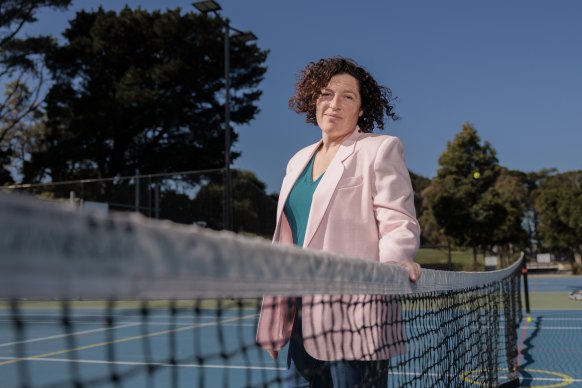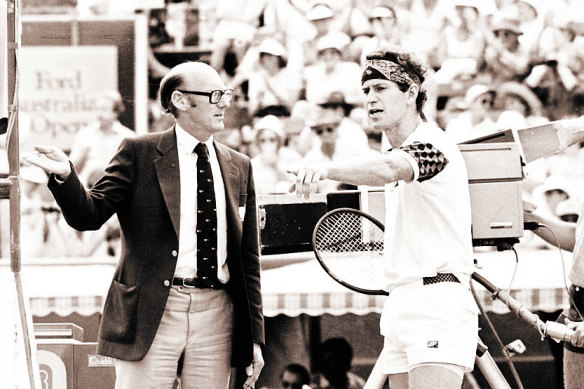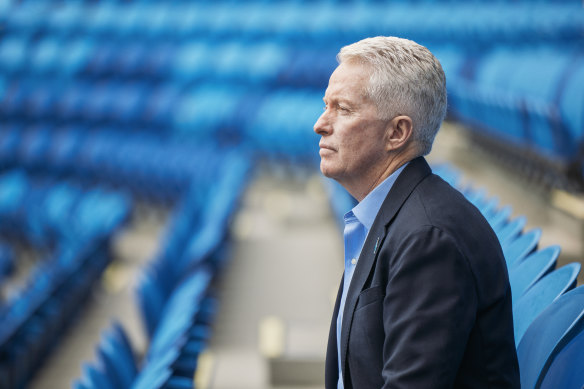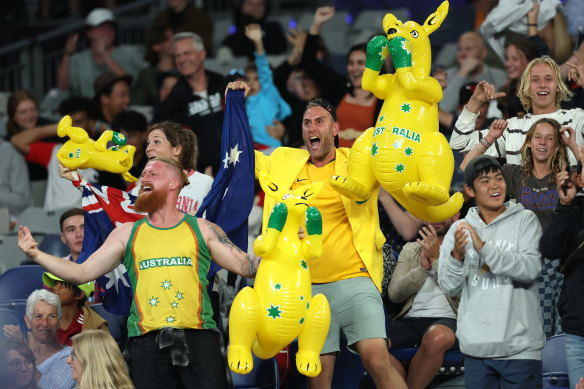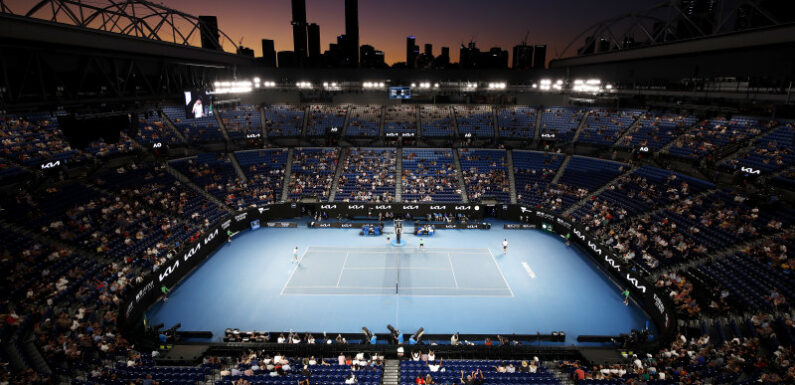
Save articles for later
Add articles to your saved list and come back to them any time.
Key points
- The documentary Australia’s Open premieres at the Melbourne International Film Festival.
- Director Ili Bare wanted to make a sports documentary that was about more than just sport and the film charts the rise of the Australian Open.
The Australian Open was once shunned by top players, snuck into by local children and very nearly lost its prestigious grand slam status.
The tournament’s transformation from a poorly attended competition in Kooyong to a huge global event is the focus of the new documentary Australia’s Open, which premiered on Saturday.
Ili Bare, director of the documentary, Australia’s OpenCredit: Brook Mitchell
Director Ili Bare wanted to make a sports documentary that was about more than just sport.
“The thing that I was really interested in … [was] all of the people who are in the arena and beyond,” she said. “What different kinds of things can be played out on the court that had nothing to do with tennis itself?”
In the Australian Open, Bare said she found an event that “if it was a tennis player, you’d say that it had a great late-career run, a great comeback”.
The documentary records the early days of the Open at Kooyong, when local kids snuck in through a hole in the fence and Australian players dominated.
John McEnroe and umpire Peter Bellenger having words when the Australian Open was still held at Kooyong in 1985.Credit: Bruce Postle
However, many top players refused to make the journey to the tournament and the film includes archival footage of former tennis champion John McEnroe complaining about the court’s surface.
Tournament director Paul McNamee described the Open at Kooyong as “the junior grand slam”, with questions raised around its retention of grand slam status.
The film charts the tournament’s move in 1988 to Melbourne Park, which was controversial at the time because it was built on open parkland. But Bare said that was key to the Open’s success.
“It has just kind of built and built and built and part of the transformation was obviously creating the new tennis centre, which we now know as Melbourne Park,” she said.
Tennis Australia boss Craig Tiley is hungry to grow the tournament further. Credit: Benny Capp
Bare said other factors also helped, like increasing globalisation and improvements in travel that made it easier for players to get Down Under, along with the Australian Open being given equal ranking points as the other grand slams.
“Basically, the organisers over the years have campaigned to make it bigger and better,” she said.
On the court, the film focuses on stars such as Pat Cash, Dylan Alcott, Ash Barty and Nick Kygrios, while off-court dramas include Novak Djokovic’s deportation, which inadvertently shone a spotlight on Australia’s treatment of refugees when he was detained in the same hotel.
“Who would have thought that the Australian Open could be the place that exposes Australia’s immigration policy to the rest of the world, to an audience who really did not know anything about it?” Bare said.
Tennis Australia boss Craig Tiley said the COVID-19 years were the toughest of his career.
“Whatever the mood of the city or the country at the time will inevitably come through at the event,” he said.
For Tiley, the Australian Open’s transformation has been driven by “constant innovation”.
“Moving the event from Kooyong to the purpose-built facilities that are now known as Melbourne Park enabled us to continue to compete on the world stage,” he said.
“More recently, the 10-year, $1 billion redevelopment of Melbourne Park has enabled us to continually transform the Australian Open and lead the way when it comes to the fan and player experience.”
However, Tiley is hungry for the tournament to continue to expand beyond the record 900,000 spectators who attended this year’s Australian Open.
The Australian Open is now one of Melbourne’s blockbuster annual sport events.Credit: Getty Images
“We’re always exploring new ways to grow and expand the Australian Open so that we are not left behind by the other Grand Slams,” he said.
“The event has experienced massive growth over the past decade and continues to surpass records set the previous year. Our ongoing success relies on continuous infrastructure improvement and innovation across the board.”
Bare said the Australian Open has a tradition of reinvention, but this constant growth poses a challenge.
“Where to next, if you are always wanting to grow and you’re always wanting to increase your audience how do you do that?” she said. “That would probably be one of the challenges.”
Australia’s Open is showing at Kino Cinema in Melbourne’s CBD on Monday, August 14 and at select regional theatres on Friday, August 18 and Saturday, August 19.
The Age is a Melbourne International Film Festival media partner.
Find out the next TV, streaming series and movies to add to your must-sees. Get The Watchlist delivered every Thursday.
Most Viewed in National
From our partners
Source: Read Full Article
